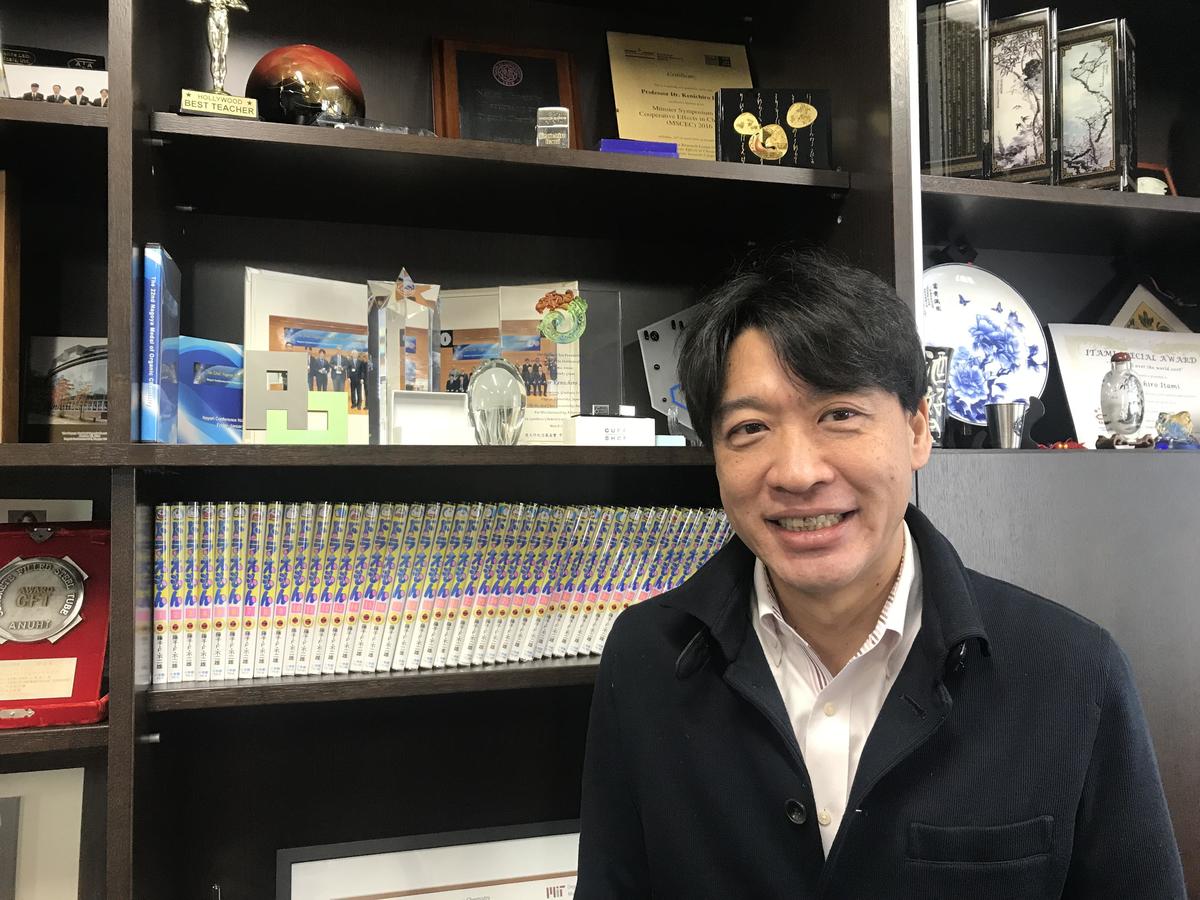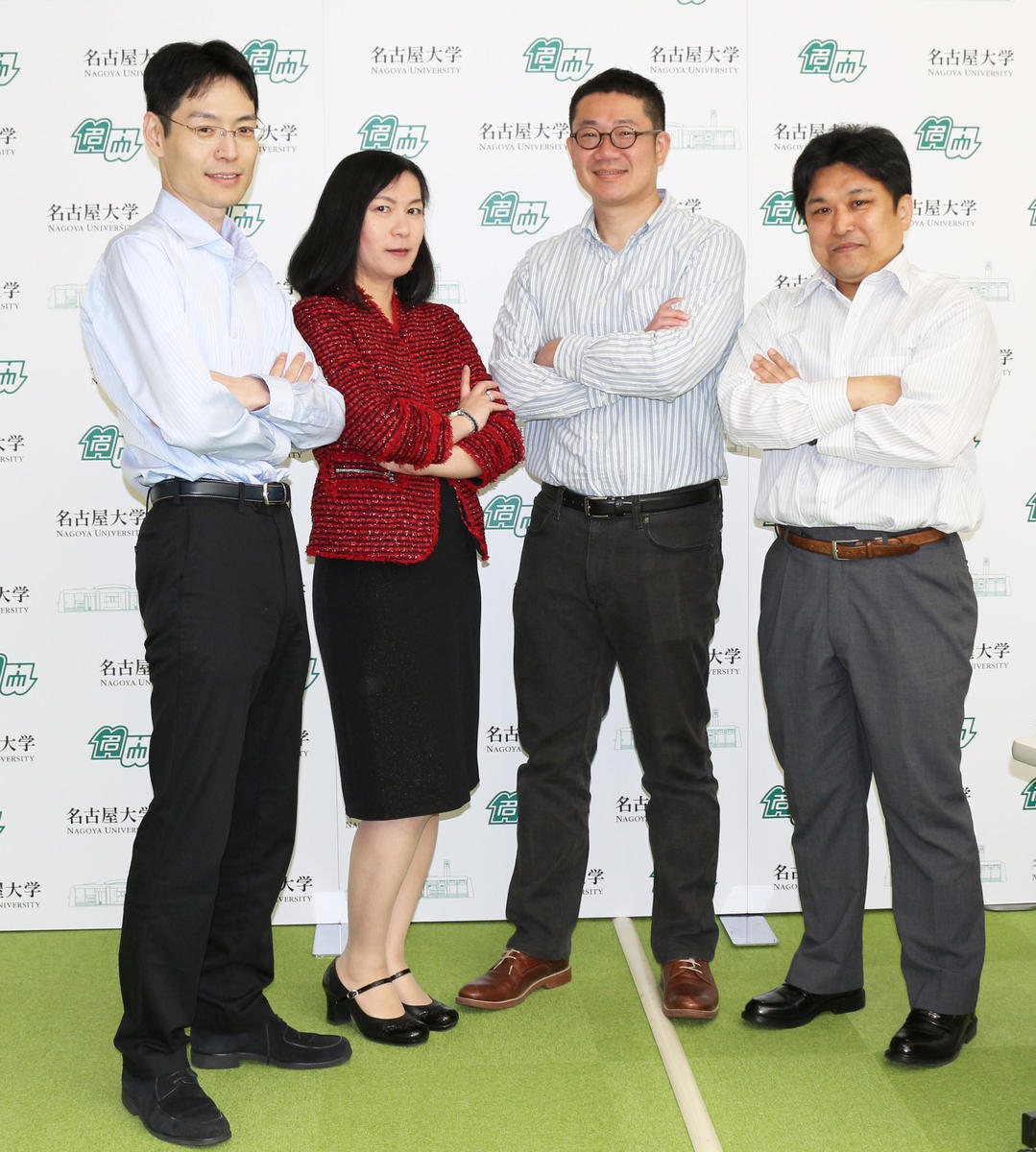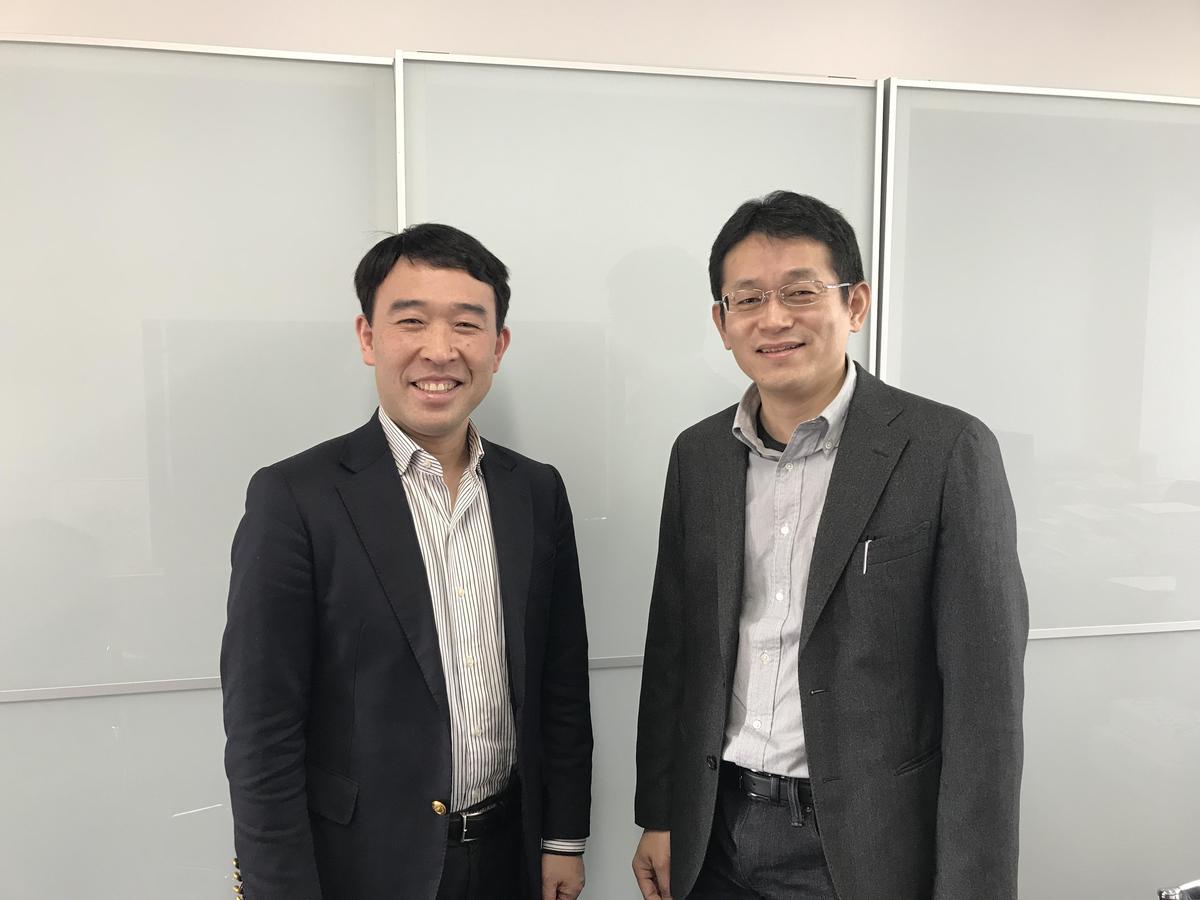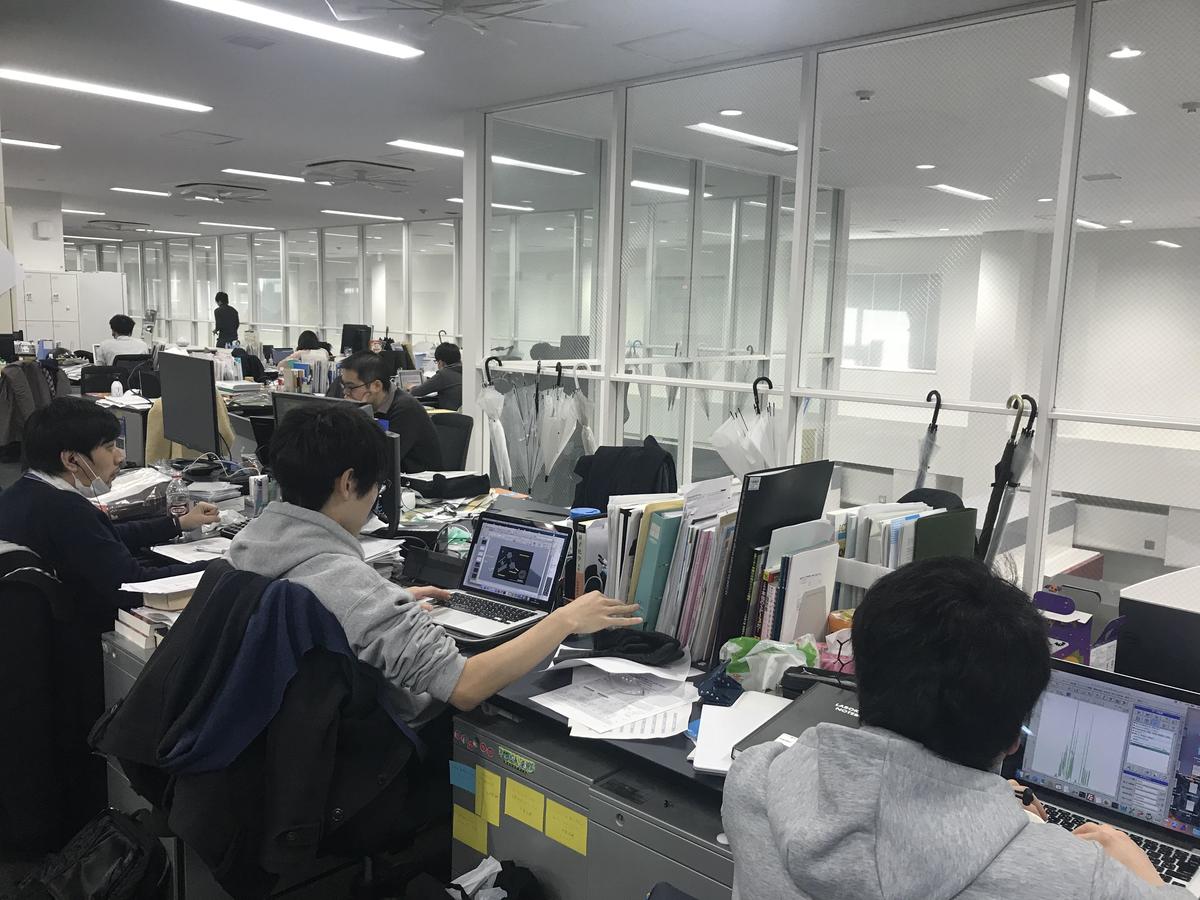February 9, 2018
A Research Institute Working to Transform the World
We hear about the merging of disciplines, but in reality things are not so simple. There is no guarantee of achievements if researchers from different fields are just brought together to be in the same place. The Institute of Transformative Bio-Molecules (ITbM) at Nagoya University could be seen as a rare example of success in this respect. It is a World Premier International Research Center (WPI) Initiative under Japan's Ministry of Education, Culture, Sports, Science and Technology (MEXT). One of nine centers that exist today, it started in 2013, five years after the first ones were created. It is one of the youngest siblings in the "family" and has only half the budget of the others, but it has already produced several major research outcomes, and has received top level recognition. Two more centers will be launched this spring, and we could say that ITbM has grown into a proud elder brother.
According to the ITbM's Director, Prof. Kenichiro Itami, the Institute merged disciplines in which Meidai already had strengths, such as chemistry and plant sciences, and the combination could be called "Nagoya Science." But until just five years ago when it was launched, researchers had seemed not to know what others were working on at the same campus or even in the same School of Science. What changed things?
 Prof. Kenichiro Itami’s lab has a full set of Doraemon comic books. His dream is to use molecules to create all of that popular cartoon character’s gadgets and magic tools, and he jokes the series is like a textbook for him.
Prof. Kenichiro Itami’s lab has a full set of Doraemon comic books. His dream is to use molecules to create all of that popular cartoon character’s gadgets and magic tools, and he jokes the series is like a textbook for him.
An announcement of research findings this January really demonstrates the power of this merging of disciplines. It was about research by Prof. Keiko Torii and colleagues relating to auxin, an important plant hormone.
Auxin itself is just a small molecule with a very simple structure. But it controls the growth of plant roots, stems and flowers, and makes plants grow toward light. It can be found everywhere and acts differently depending on where it is in the plant. Like a tiny wizard, its mechanisms and functions wherever it appeared were enveloped in mystery.
The research group synthesized a convex auxin molecule and a receptor with a concavity or hole that fit the bump exactly. If they incorporated the hole receptor at the target location of a plant, it would not respond to natural auxin, and only react to the synthesized auxin with the bump. With this bump-and-hole strategy (convex and concave design) the pathway to more precise understanding of the various functions of auxin opened up for the first time. By applying this method, they could pinpoint exactly how auxin was behaving when sprouts germinated in the dark rapidly grew toward light. This behavior was what Darwin discovered more than 130 years ago and became the key to the later discovery of auxin. They found answers to the mystery about it.
Auxin is like a superstar in plant science. Torii recalls how the bump-and-hole strategy created quite a stir when they announced it at an international conference last summer.
Not only did they open the path to research. Synthetic auxin is widely used in applications to ripen fruit and as herbicide, but it is difficult to use because it behaves very differently depending on location. For example, to ripen fruit, auxin must be applied to each individual flower. But with the bump-and-hole strategy, it is theoretically possible to affect only selected fruit even if the auxin is sprayed aerially.
 Auxin research group. From left, Naoyuki Uchida, Keiko Torii, Shinya Hagihara and Koji Takahashi. They have diverse backgrounds: pharmacy, biology, engineering, and agriculture.
Auxin research group. From left, Naoyuki Uchida, Keiko Torii, Shinya Hagihara and Koji Takahashi. They have diverse backgrounds: pharmacy, biology, engineering, and agriculture.
So, how did that achievement come about?
Torii is a world-renowned plant scientist for her research in stomata, which regulate gas exchange for plant respiration and photosynthesis. She is also teaching at the University of Washington and is one of fifteen plant scientists selected from across the U.S. by the Howard Hughes Medical Institute. When the ITbM was launched, she was invited as a principal investigator from outside Japan, but her research base is in the U.S. The extremely busy Prof. Torii makes it to Meidai three or four times a year, and she is here for just a week each time except for summer vacation. The platform that was created here to support overseas researchers like her is the collaborative principal investigator program to operate research labs in Japan. Designated Associate Prof. Naoyuki Uchida, who supports Prof. Torii, is a doctor of pharmacy and an expert in plant emergence and growth control. Knowing he would be able to conduct research with Prof. Torii, he transferred here from a full-time post at the Nara Institute of Science and Technology.
This research began with Assistant Prof. Shinya Hagihara in organic chemistry experimenting to synthesize various inducing agents from auxin. However, there was no application for his work and just when he began to think there was no way to go further, it was Torii who told him "You made it this far, so you can't stop now. I wonder if there could be some amazing applications." She is not an expert in auxin, but had considered a concept like the bump-and-hole strategy at one point. Quickly Hagihara and Uchida synthesized a bump-and-hole combination of auxin and receptors, then conducted experiments and confirmed the effectiveness. They were then joined by Assistant Prof. Koji Takahashi, an auxin expert with an agricultural background. This process demonstrated the benefits of ITbM, where researchers from various fields relating to chemistry and biology can interact under one roof.
Regarding working on this research with people from very different disciplines, Torii says, "The experience was like being completely reborn." She is grateful to Nagoya University for creating the space for this level of inter-disciplinary collaboration, which she had not experienced previously.
How did the ITbM come about originally?
Under the WPI initiative, one billion yen will be provided per center over the course of a decade, with the aim of creating research centers of an international caliber. In the academic field, this is the largest such program in Japan. To begin with, five centers were chosen for the initiative, including a group centering on Kyoto University Prof. Shinya Yamanaka, known for developing iPS cells.
From Meidai, two big names from the School of Science created a plan for the merging of disciplines and submitted an application. They were Prof. Kazuyuki Tatsumi, an expert in inorganic chemistry, who was also elected as chair of the International Union of Pure and Applied Chemistry, and Prof. Takao Kondo, who has garnered recognition for research into biological clocks. Young researchers were mobilized to prepare written proposals. But the proposals were not accepted twice, and it was decided that next time just the young researchers would give it a try. At the time, the members included two each from chemistry and biosciences, for a total of four. They had the youthful aspiration of researchers who had become professors in and around their mid-thirties. However, as it was a major program that would also include large responsibilities, the younger ones were 100% reluctant initially. Someone even suggested they refrain from trying, but Tatsumi declared "You must do it."
Meanwhile, when they discussed things, there was quite a level of enthusiasm centering on molecules - about the types of molecules and their amazing functions. "The discussions turned toward what could be achieved and how," recalls Prof. Tetsuya Higashiyama. With a focus on "molecules," the concept quickly settled on the idea of aiming for a fusion of synthetic chemistry, plant science, animal science, and theoretical science. As shown by the example of auxin, in plants and other living things, various molecules fulfill enormous roles in sustaining life. Chemists who were passionate about synthesizing molecules combined their expertise with plant scientists, and they were actually attempting to manipulate biological phenomena or create new science. At this point, Tatsumi and Kondo shifted to playing a support role.
Itami's vision statement as the Center Director starts with "Changing the world with molecules." The word "transformative" incorporates that concept in the very name of the Center. At the time, he was 41 years old, and the principal investigators' average age was 43 including the overseas contingent, making this the youngest research center by far among the WPI centers. In its interim assessment, ITbM received the highest possible evaluation, for "literally straddling several disciplines and inducing transformation." Among the nine centers, the only other one to receive this evaluation was the University of Tokyo's Kavli Institute for the Physics and Mathematics of the Universe (Kavli IPMU).
Tatsumi says that factors in this success included boldly giving the young researchers full freedom, and more than anything, creating a structure led by the researchers themselves. He also says that it is the Meidai style to give younger researchers the freedom to do their work. Each member of the young four-person team was from other universities, but Meidai created the platform for them to make the most of their abilities.
 ITbM’s Vice-Director Prof. Tetsuya Higashiyama (left) and Prof. Shigehiro Yamaguchi
ITbM’s Vice-Director Prof. Tetsuya Higashiyama (left) and Prof. Shigehiro Yamaguchi
ITbM states that its research objective is to develop molecules to "understand, see, and regulate" life. Researchers here above all value a sense of wonder in their research. A big dream is also to contribute to global issues like food security. Under Itami's leadership, plant scientist Higashiyama, and of course one of the original four researchers, synthetic chemist Prof. Shigehiro Yamaguchi, serve together as Vice-Director.
Currently they are a good combination, but until they joined the original four member team, they only had casual interactions at faculty meetings and so on, and there was never any discussion about research. They were aware of each other, but that was all. As Higashiyama says, "We were in the same School of Science, but the biosciences tend to see chemistry as a competitor, and I had the impression that Prof. Yamaguchi was a sharp and tough rival."
One of the big achievements that they worked on together was the development of the photostable fluorescent dye C-Naphox used for live imaging, which allows researchers to observe dynamic processes inside living things. Although high-resolution microscopes had appeared, like the stimulated emission depletion (STED) super-resolution fluorescence microscope, which earned the Nobel Prize in Chemistry in 2014, they only allowed researchers to observe processes for short periods, because when strong light was shone onto the fluorescent marker dyes, the colors faded quickly. Yamaguchi had heard about this from Higashiyama and spent two years on the development. The potential now exists to investigate life processes for extended periods, and even better, in three-dimensions.
Researchers from different disciplines are in a large space called the "Mixed Lab" where they can discuss things day to day, and students go to study in labs outside their specialty depending on what interests them. Yamaguchi says that collaborative research with Higashiyama and five years at the ITbM have changed him significantly as a chemist. The content of research of creating better molecules is the same, but in contrast to the past when his world was limited to chemistry, now his perspective has broadened significantly to see the world beyond it. He comments that academics he meets at scientific meetings say the same thing about him. He also observes that presentations given at seminars of the chemistry department have become more colorful, ranging from materials to biological sciences, compared to more monotonous presentations of the past. He even looks ahead to developing his research into medical imaging.
That's why some would say that it is Prof. Yamaguchi who got transformed the most at the ITbM. Even so, over just five years, when things change, they really change.
 Mixed Lab with desks lined up for researchers from different fields
Mixed Lab with desks lined up for researchers from different fields
The world will expand if these two work together - Higashiyama who besides the discovery of pollen-tube attractants is also a world leader in plant live imaging, and Yamaguchi who is known for his outstanding molecular research such as work on fluorescent materials. If we think about it now, it was a natural combination, but it is surprising to realize now that until they were called to join the team, there was absolutely no interaction, even if they were neighbors.
Within the university there are undoubtedly many possible combinations with latent potential. But at ITbM everyone agrees that simply putting researchers from different fields together for general discussions does not ensure any breakthroughs. With the collaborative research at ITbM, says Torii, the depth is completely different from what one can see in typical collaborative research. When researchers simply push their own expertise, the communication stops as they cannot understand each other. Usually things would end there. In the case of Yamaguchi, they searched for someone who could serve to translate between the worlds of chemistry and biosciences. In other words, a chemist who had tried his hand at bioscience. Finally they found someone, and they could invite him in. Then suddenly the communication started to happen.
I would like the experience of ITbM to spread in the university. In fact, not just inside but also beyond the university. There is something on the horizon.
One day Itami received an e-mail message. It was from none other than Prof. Hiroshi Amano, who had received the Nobel Prize in Physics in 2014 for the development of the blue LED. He asked what Prof. Itami thought about him naming his new research as "transformative electronics." Prof. Amano explained that he would like to change the world through his new electronics, just as his blue LED had changed the world. Itami answered, "It is a good idea and we can expect synergistic effects." I really hope that all this transformative research at Meidai will flourish and transform the world.

 Subscribe to RSS
Subscribe to RSS